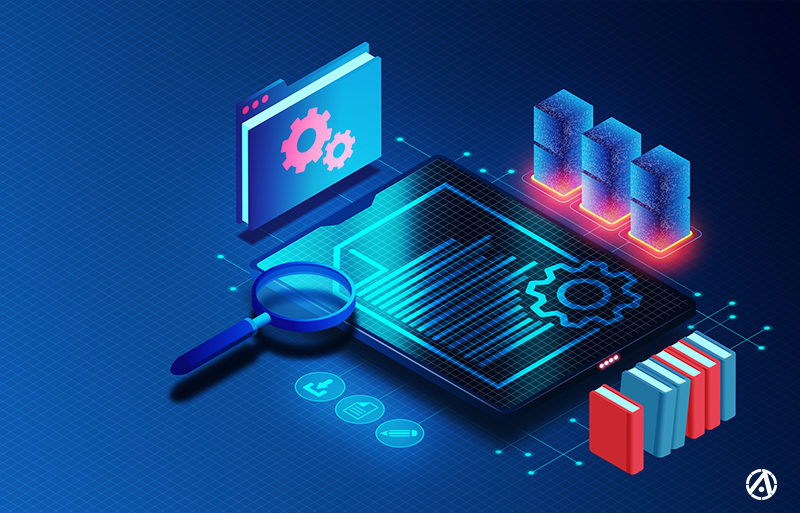SOC 2 examinations have become a ”must-have” rather than a ”nice-to-have” business component; they provide assurance that organizations adhere to stringent controls for data protection and system reliability. As a result, many companies pursue SOC 2 examinations to demonstrate trustworthiness and commitment to safeguarding customer data by evaluating security controls and processes relevant to critical business operations.
With the continuous evolution of digital environments, organizations recognize the impact of software tools in their SOC 2 journey because of its strategic advantages in navigating the evolving data security and privacy landscape. These tools help organizations unlock a new efficiency paradigm during the SOC 2 examination process. However, it is crucial to understand that SOC 2 tools are not a replacement for the dynamic expertise of service auditors because they play an indispensable role in contextualizing findings and validating the integrity of the output data from the tools.
In this article, we delve into the importance of a symbiotic relationship between technological innovations and human insight to help guide organizations in choosing service auditors who understand an organization’s unique environment and provide SOC 2 examinations with meaningful and impactful outcomes.
Advantages of Software Tools for SOC 2 Examinations
Increased Efficiency in Compliance Workflows
Embracing software tools instills a dose of efficiency into compliance workflows, resulting in accelerated SOC 2 examination processes. Time-consuming tasks are automated, leading to quicker identification and resolution of issues. This increased efficiency allows organizations to streamline their compliance journey without compromising the quality of their examinations.
Improved Accuracy and Reliability in Compliance Reporting
Software tools significantly minimize the risk of human error, ensuring the consistent application of compliance measures. Automated processes adhere to predefined standards, reducing discrepancies and enhancing the reliability of compliance reporting. This instills confidence in stakeholders and strengthens the integrity of the examination process.
Challenges Associated with SOC 2 Software Tools
Integration Complexities Between Different Software Tools
While software tools provide many benefits, integrating diverse tools can present challenges. Ensuring seamless interoperability requires careful consideration to prevent silos and information gaps. Organizations must strategize to harmonize various tools effectively, fostering a cohesive and integrated compliance ecosystem.
Scalability Concerns as Organizations Grow and Evolve
As the business needs of an organization evolve, scalability becomes critical to operational output. Adapting software tools to meet changing demands without compromising effectiveness, accuracy, or process quality poses a challenge. Therefore, forward-thinking organizations must select software tools that scale seamlessly alongside their growth, ensuring continued efficacy in the ever-changing governance, risk, and compliance landscape.
Data Integrity Challenges and Role of Service Auditors
In the context of SOC 2 examinations, one of the most critical challenges service auditors face is ensuring the integrity of the data produced by software tools. The procedures performed by the service auditor to verify the integrity of this data are pivotal, as they directly influence the credibility of the SOC 2 report. Given the risks associated with over-reliance on SOC 2 tools without adequate verification, auditors must navigate through meticulous steps to validate that these tools operate as intended and that the information they provide is complete and accurate.
The SOC 2 peer review checklist, particularly step AT227, is crucial in guiding auditors through this process. This step mandates that the service auditor evaluates the procedures performed by the service organization to ascertain whether information produced or generated by third-party applications and tools, including software automation tools, is accurate and complete.
This evaluation is essential, primarily when management relies on the SOC 2 tool for designing and maintaining monitoring controls. Here, the auditor must assess whether management has effectively validated the monitoring tool configurations to ensure they are configured correctly and generate reliable data.
Implications of Relying on SOC 2 Reports from Software Tools
When organizations use software tools from vendors/providers for critical processes, the impact on their SOC 2 examination process can be significant. Specifically, the software tool in question often becomes an in-scope application and depending on the nature of the relationship and reliance on the vendor/provider, this entity may become a carved-out sub-service organization within the SOC 2 framework.
A vendor or provider of a software tool may be considered a sub-service organization if their services are part of the system that the service organization (the entity undergoing the SOC 2 examination) uses to deliver its services. The organization may often carve out the sub-service organization from its SOC 2 report. This means that the service organization’s management excludes the sub-service organization’s controls from the SOC 2 examination scope, assuming it has its own SOC 2 report or equivalent assurance report covering the relevant security controls.
The Relationship Between Software Tools and Service Auditors
Many organizations fall prey to misconceptions about the capabilities of software tools in SOC 2 examinations. It’s essential to debunk the myth that these tools can replace the expertise of service auditors. We will clarify the scope and limitations of software tools, emphasizing their role as enablers rather than standalone solutions.
The synergy between software tools and service auditors in SOC 2 examinations is vital. While tools streamline processes and enhance efficiency, they don’t replace the judgment and skills of service auditors. Service auditors validate the effectiveness of SOC 2 tools to balance risk management with benefits introduced by the tools, ensuring data reliability and regulatory alignment.
Additionally, organizations leverage the expertise of service auditors to identify gaps and emerging risks that may elude automation. Whenever clients have a SOC 2 tool in their environment, service auditors often modify audit plans and procedures throughout the SOC 2 examination process. Above all, the relationship is symbiotic—tools support workflows, auditors ensure oversight. This collaborative approach achieves SOC 2 readiness effectively, mitigating risks and safeguarding data.
Conclusion
The SOC 2 journey is not without its intricacies, mainly when relying on software tools. The implications of carving out sub-service organizations, carefully evaluating monitoring tool configurations, and the interplay between vendors, providers, and the SOC 2 framework underscore the need for a comprehensive understanding of the relationship between software tools and the examination process.
In dispelling misconceptions, it is crucial to recognize that software tools and service auditors operate in tandem, each playing a unique yet interdependent role. The cooperation between the two is the key to unlocking the true potential of SOC 2 readiness.
As organizations traverse the ever-evolving data security and privacy landscape, the message is clear: Choose software tools wisely, but do not underestimate the profound impact of service auditors’ discerning eye and expertise. Together, they form an unbeatable alliance, ensuring that your SOC 2 journey is not just a compliance checkbox but a testament to cybersecurity resilience, trustworthiness, and a commitment to safeguarding the integrity of critical business operations.

